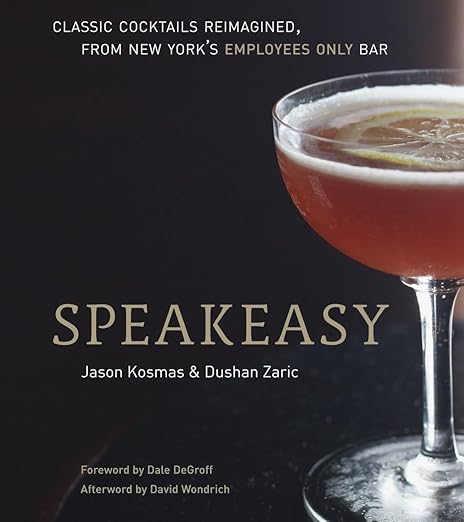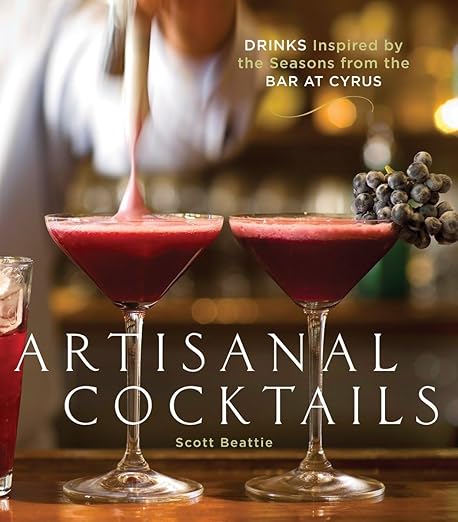In part 1, I reviewed my favorite cocktail books as well as additional recommended books. The is next set is books I also use frequently or have really enjoyed.
Regarding Cocktails
- Level: Intermediate (but also reached cocktail enlightenment)
- Rating: ⭐⭐⭐⭐⭐
- Favorite Drink: Debbie, Don’t, page 99
Regarding Cocktails sat on my bookshelf without much attention for a good while. Letting this book gather dust was a mistake on my part. This is an absolute treasure of a cocktail book. I was vaguely aware of Sasha Petraske and his groundbreaking bar, Milk and Honey. By the time I had gotten serious about patronizing NYC cocktail bars, Milk and Honey was long since closed so it was more of a legend to me than a real place. Sasha Petraske passed away in 2015 and until I picked up this book my exposure to him was the glowing accounts I read in other cocktail books about how working with him was revolutionary for the author of that book.
Sasha Petraske’s approach is that of chasing and achieving perfection through simplicity. As many mixologists will tell, it’s harder to make a great three-ingredient than a great 10 ingredient cocktail because there’s nowhere to hide anything less than perfect. There are no complicated infusions or syrups here. The emphasis is all on great craft and letting the drink speak for itself. The illustrations in the book at fantastic and visually depict the relative amounts of the ingredients.
This video shows you Sasha Petraske in action making a Bee’s Knees and talking about the genesis of his legendary bar. Milk and Honey was the first modern speakeasy. Being a speakeasy wasn’t purely a stylistic choice but rather a response to the unique circumstances of starting his bar. So many bars followed in the speakeasy mold as a stylistic choice. If Sasha Petraske bar had started in a different location, there might not be 100s of bars modeled as speakeasies.
The Aviary Cocktail Book
- Author: Nick Kokonas, Allen Hemberger, Grant Achatz
- Level: For people who enjoy taking their hobbies too far
- Rating: ⭐⭐⭐⭐
- Favorite Drink: ? — I haven’t attempted any
The Aviary Cocktail Book is absolutely gorgeous. It’s beautifully printed and photographed. It’s so nice that I keep it safely in the cardboard box it came in. If you want a beautiful box to keep it safely, spring for the reserve edition. The Aviary’s philosophy is that a drink should be a complete sensory experience. The process to make a drink a complete sensory experience is very complicated, especially for the home bartender. There are many advanced techniques such as spherification in the book. Many of the techniques need special equipment. Making any of the drinks is a major undertaking where you will be hunting down special ingredients and learning new techniques.
In many ways, the philosophies of the Aviary and Sasha Petraske are complete opposites. They are both chasing perfection but one through complexity and the other through simplicity. The Aviary as a bar is a fantastic experience. I went to the NYC outpost once and would very happily go back. You’ll have to be extremely committed to making these drinks at home. Buying the book was worthwhile for me to learn about the techniques. But it’s not a practical guide for the home bartender. That said, I’m incredibly impressed with The Aviary At Home which is the website of one amateur mixologist who has taken on the challenge of making all the recipes from the book. He’s done 16 so far and reading his accounts is a great way to learn what’s involved in making one of these drinks at home.
Beachbum Berry’s Potions of the Caribbean
- Author: Jeff Barry
- Level: Advanced
- Rating: ⭐⭐⭐⭐
- Favorite Drink: Zombie, page 179
Jeff “Beachbum” Barry is one of the world’s premier experts on Tiki drinks. He’s found countless lost recipes. Potions of the Caribbean is a great history of tropical drinks. I particularly enjoyed all the historical photographs and images of the vintage cocktail menus. The book has many vintage cocktail recipes. These recipes are all the classical versions and this book doesn’t give guidance on which currently available rums to use to make them. As such, if you are looking for a practical guide for making drinks at home, Smuggler’s Cover is a better choice. This book is fantastic if you want to dive into the history of tropical drinks.
The Canon Cocktail Book
- Author: Jamie Boudreau
- Level: Intermediate
- Rating: ⭐⭐⭐⭐
- Favorite Drink: Cherry Blossom, page 80
Canon is a whiskey-focused bar so many of the recipes a whiskey focused. Many of the recipes aren’t overly complex and thus many are quite doable in a home bar. Boudreau is an Old Fashioned enthusiast and a section of the book is Old Fashioned recipes. I made the fairly involved Old Fashioned syrup and tried out the Old Fashioned recipes. My syrup didn’t come out quite right but the resulting Old Fashioneds were still good. There’s also a section of the book the talks about the realities of running a bar. This is a great reality check for any who daydreams about starting a bar.
Bar Chef
- Author: Christiaan Röllich
- Level: Advanced
- Rating: ⭐⭐⭐⭐
- Favorite Drink: Raoul Duke, page 198
As the name of the book suggests, Bar Chef is a cooking-focused approach to cocktail making. Röllich’s cocktails have many custom syrups. He also makes most of his own ingredients that most other mixologists would purchase. Vermouth is an example. I made both the sweet and dry vermouth recipes from the book. The sweet vermouth had a nice complex and layered flavor with the bitterness that’s common in classical Italian vermouth. The custom syrups make for innovative cocktails. There’s a decent amount of effort to make them but the reward is there.












